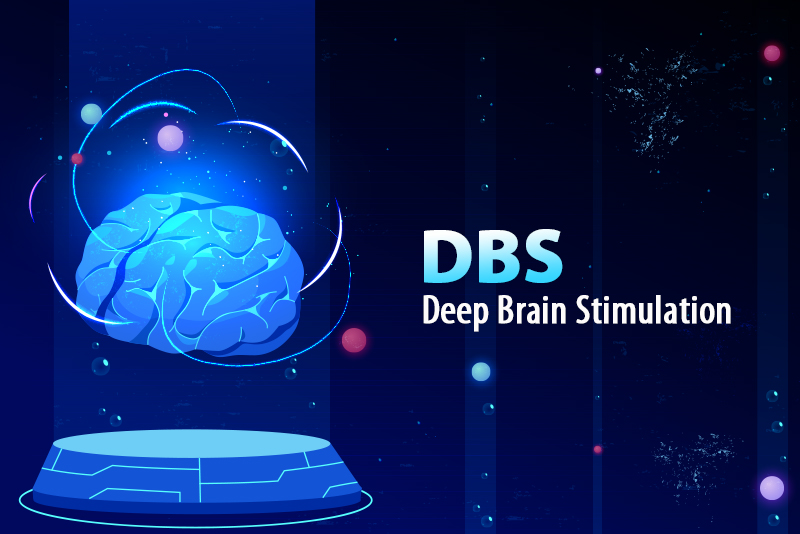Proper and professional medical billing and coding support can make a significant difference when it comes to hospital revenue cycle management. When considering neurosurgical procedures such as deep brain stimulation (DBS), it is important to understand the coding guidelines to assign the correct codes for billing and reimbursement purposes. Healthcare practices can rely on the services of medical billing companies that have professional teams to help hospitalists ensure that all services are billed using the correct codes. In addition, in case of incomplete documentation, expert coders will query the physician to assign the most appropriate codes, which is crucial for accurate reimbursements. In this post, we look at the specifics of medical billing and coding for deep brain stimulation (DBS) – a serious neurosurgical procedure.

Improve your neurosurgery medical billing with our expert medical billing services.
Why Is Deep Brain Stimulation (DBS) Performed?
A serious neurosurgical procedure, Deep brain stimulation (DBS) uses implanted electrodes and electrical stimulation to treat movement disorders or neuropsychiatric conditions such as – Parkinson’s disease, essential tremor, dystonia and epilepsy and psychiatric conditions, such as obsessive-compulsive disorder. It is also being performed as a potential treatment for -Tourette syndrome, Huntington’s disease and chorea, chronic pain and cluster headache. Normally, DBS is performed when medications become less effective for the above-mentioned disorders or if their side effects interfere with a person’s daily activities.
How Is DBS Done?
Deep brain stimulation (DBS) surgical procedure involves implanting electrodes within certain areas of the brain. These electrodes produce electrical impulses that regulate abnormal impulses that can affect certain cells and chemicals within the brain. The amount of stimulation in this procedure is controlled by a pacemaker-like device placed under the skin in your upper chest. A wire that travels under your skin connects this device to the electrodes in your brain.
As part of the procedure, neurosurgeons implant one or more small wires (called leads or electrodes) in the brain during a surgical procedure. The leads receive mild electrical stimulation from a small pulse generator implanted in the chest. Therefore, careful patient selection, precise placement of the electrodes and adjustment of the pulse generator are essential for successful DBS surgery. The procedure does not fully resolve the symptoms of PD or other conditions, but it can lessen a patient’s need for medications and improve his/her quality of life. Although deep brain stimulation is generally considered to be a low risk procedure, any type of surgery has the risk of complications. Also, the brain stimulation itself can cause side effects and certain complications such as – bleeding in the brain, stroke, infection, breathing problems, nausea, seizure, infection, headache, stroke and concentration problems. The surgery will not fully cure your disease, but it may help reduce the intensity of your symptoms. In some cases, medications may still be required for certain conditions. Generally, the hospital stay after DBS surgery is 24 hours but it may be longer depending on how quickly the patient recovers.
Medical Codes for DBS
ICD-10-PCS Procedure Codes
Lead Implantation
- 00H00MZ Insertion of neurostimulator lead into brain, open approach
- 00H03MZ Insertion of neurostimulator lead into brain, percutaneous approach
Generator Implantation
- 0JH60BZ Insertion of single array stimulator generator into chest subcutaneous tissue and fascia, open approach
- 0JH60DZ Insertion of multiple array stimulator generator into chest subcutaneous tissue and fascia, open approach
- 0JH60EZ Insertion of multiple array rechargeable stimulator generator into chest subcutaneous tissue and fascia, open approach
Lead Removal
- 00P00MZ Removal of neurostimulator lead from brain, open approach
- 00P03MZ Removal of neurostimulator lead from brain, percutaneous approach
Generator Removal
- 0JPT0MZ Removal of stimulator generator from trunk subcutaneous tissue and fascia, open approach
- 0JPT3MZ Removal of stimulator generator from trunk subcutaneous tissue and fascia, percutaneous
- 00W00MZ Revision of neurostimulator lead in brain, open approach
- 00W03MZ Revision of neurostimulator lead in brain, percutaneous approach
- 0JWT0MZ Revision of stimulator generator in trunk subcutaneous tissue and fascia, open approach
- 0JWT3MZ Revision of stimulator generator in trunk subcutaneous tissue and fascia, percutaneous approach
CPT Codes
- 61850 Twist drill or burr hole(s) for implantation of neurostimulator or electrodes, cortical.
- 61860 Craniectomy or craniotomy for implantation of neurostimulator electrodes, cerebral, Cortical
- 61863 Twist drill, burr hole, craniotomy, or craniectomy with stereotactic implantation of neurostimulator electrode array in subcortical site (eg, thalamus, globus pallidus, subthalamic nucleus, periventricular, periaqueductal gray), without use of intraoperative microelectrode recording; first array
- 61864 Twist drill, burr hole, craniotomy, or craniectomy with stereotactic implantation of neurostimulator electrode array in subcortical site (eg, thalamus, globus pallidus, subthalamic nucleus, periventricular, periaqueductal gray), without use of intraoperative microelectrode recording; each additional array (List separately in addition to primary procedure)
- 61867 Twist drill, burr hole, craniotomy, or craniectomy with stereotactic implantation of neurostimulator electrode array in subcortical site (eg, thalamus, globus pallidus, subthalamic nucleus, periventricular, periaqueductal gray), with use of intraoperative microelectrode recording; first array
- 61868 Twist drill, burr hole, craniotomy, or craniectomy with stereotactic implantation of neurostimulator electrode array in subcortical site (eg, thalamus, globus pallidus, subthalamic nucleus, periventricular, periaqueductal gray), with use of intraoperative microelectrode recording; each additional array (List separately in addition to primary procedure)
- 61880 Revision or removal of intracranial neurostimulator electrodes
- 61885 Insertion or replacement of cranial neurostimulator pulse generator or receiver, direct or inductive coupling; with connection to a single electrode array
- 61886 Insertion or replacement of cranial neurostimulator pulse generator or receiver, direct or inductive coupling; with connection to 2 or more electrode arrays
- 70450-26 CT, head or brain without contrast material
- 70551-26 MRI, brain (including brain stem) without contrast material
- 76376-26 3D rendering with interpretation and reporting of computed tomography, magnetic resonance imaging, ultrasound, or other tomographic modality, with image post-processing under concurrent supervision, not requiring image post-processing on an independent workstation
- 76377-26 3D rendering with interpretation and reporting of computed tomography, magnetic resonance imaging, ultrasound, or other tomographic modality, with image post-processing under concurrent supervision, requiring image post-processing on an independent workstation
- 95961-26 Functional cortical and subcortical mapping by stimulation and/or recording of electrodes on brain surface, or of depth electrodes, to provoke seizures or identify vital brain structures; initial hour of attendance by physician or other qualified healthcare professional
- 95962-26 each additional hour of attendance by physician or other qualified healthcare professional
- 95970 Electronic analysis of implanted neurostimulator pulse generator/transmitter (eg, contact group[s], interleaving, amplitude, pulse width, frequency [Hz], on/off cycling, burst, magnet mode, dose lockout, patient selectable parameters, responsive neurostimulation, detection algorithms, closed loop parameters, and passive parameters) by physician or other qualified health care professional, with brain, cranial nerve, spinal cord, peripheral nerve, or sacral nerve, neurostimulator pulse generator/transmitter, without programming
- 95983 Electronic analysis of implanted neurostimulator pulse generator/transmitter (eg, contact group[s], interleaving, amplitude, pulse width, frequency [Hz], on/off cycling, burst, magnet mode, dose lockout, patient selectable parameters, responsive neurostimulation, detection algorithms, closed loop parameters, and passive parameters) by physician or other qualified health care professional, with brain neurostimulator pulse generator/transmitter programming, first 15 minutes face-to-face time with physician or other qualified health care professional
- 95984 with brain neurostimulator pulse generator/transmitter programming, each additional 15 minutes face-to-face time with physician or other qualified health care professional
HCPCS Codes
- L8679 Implantable neurostimulator pulse generator, any type
- L8687 Implantable neurostimulator pulse generator, dual array, rechargeable, includes extension
- L8688 Implantable neurostimulator pulse generator, dual array, non-rechargeable, includes extension
- L8681 Patient programmer (external) for use with implantable programmable neurostimulator pulse generator, replacement only
- L8689 External recharging system for battery (internal) for use with implantable neurostimulator, replacement only
- C1767 Generator, neurostimulator (implantable), non-rechargeable
- C1820 Generator, neurostimulator (implantable), non-high frequency with rechargeable battery and charging system
- C1883 Adaptor/extension, pacing lead or neurostimulator lead (implantable)
- C1787 Patient programmer, neurostimulator
- L8689 External recharging system for battery (internal) for use with implantable neurostimulator, replacement only
- L8699 Prosthetic implant, not otherwise specified
- L9900 Orthotic and prosthetic supply, accessory, and/or service component of another HCPCS “L” code
The specific CPT code selection depends on the documentation of the healthcare provider, the services provided, and the medical necessity of each case.
Optimize your medical billing workflows and enhance practice efficiency!
By partnering with a neurosurgery medical coding company, healthcare practices can ensure precise billing and coding, as well as prompt submission of claims. Outsourcing these critical tasks enables healthcare providers to prioritize patient care while guaranteeing accurate and timely reimbursement for their services.





